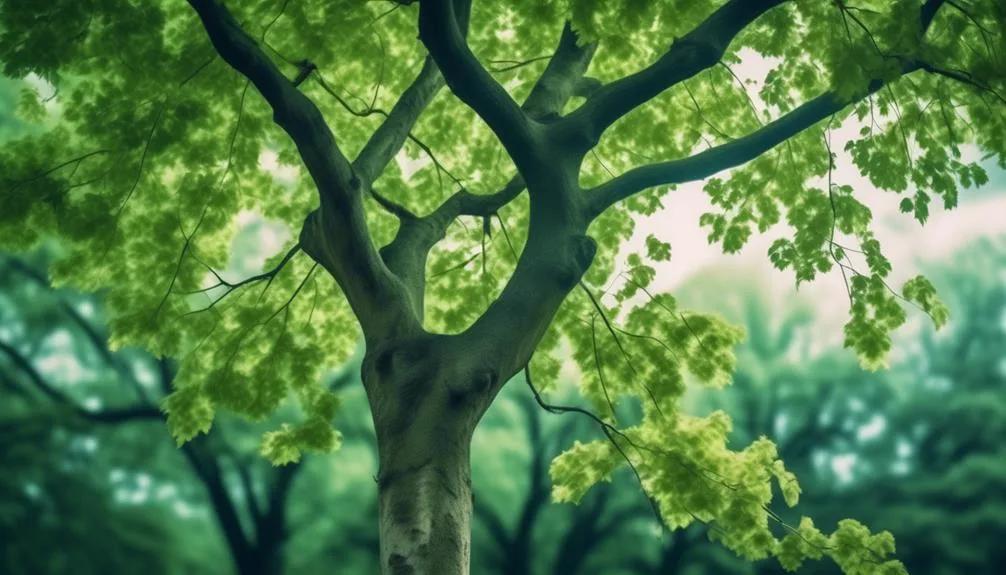As the climate changes, sycamore trees face new challenges. Rising temperatures and unpredictable weather patterns are forcing these majestic trees to adapt to survive.
What strategies are they using to combat the effects of climate change? Join us as we explore the world of sycamore trees and the potential impact of climate change on their future in a straightforward, common language.
Sycamore Trees and Climate Change
Sycamore trees play a crucial role in mitigating the effects of climate change through their remarkable ability to sequester carbon from the atmosphere and stabilize ecosystems. These trees demonstrate remarkable resilience in the face of environmental stressors.
Sycamores have adapted to various climate conditions, from hot and dry environments to cold and wet climates. Their ability to withstand these stressors makes them crucial in maintaining ecological balance. Sycamores can thrive in diverse soils, from sandy to clay, making them resilient in various landscapes.
Their large, lobed leaves provide ample shade and reduce water evaporation, further contributing to their resilience in challenging environments. Their capacity to endure and thrive in the face of environmental pressures makes sycamore trees an essential ally in the fight against climate change.
Challenges for Sycamore Trees
Despite their remarkable resilience, sycamore trees face significant challenges in the ever-changing environment, posing a threat to their ability to thrive and contribute to ecological balance.
Sycamore tree survival is being increasingly threatened by a range of environmental stressors. One of the most pressing challenges is the rise in temperature, which can lead to drought conditions, affecting the tree's water supply and overall health.
Additionally, extreme weather events, such as storms and floods, can cause physical damage to the trees and disrupt their growth cycles. Furthermore, invasive pests and diseases are posing a growing threat, weakening the trees' natural defenses.
These environmental stressors not only hinder the sycamore trees' growth and reproduction but also impact the broader ecosystems in which they play a vital role.
Adaptation Strategies for Sycamore Trees
Facing these significant challenges, sycamore trees have developed remarkable adaptation strategies to thrive in the ever-changing environment, ensuring their continued contribution to ecological balance.
- Genetic Diversity: Sycamore trees exhibit a wide range of genetic diversity, allowing them to adapt to various environmental conditions. This diversity enables the species to better withstand changes in temperature, precipitation, and soil composition.
- Seed Dispersal: Sycamore trees have evolved efficient seed dispersal mechanisms, ensuring that their offspring can colonize new areas. This helps them to find suitable habitats as environmental conditions shift.
- Physiological Adaptations: Sycamore trees have developed physiological adaptations, such as efficient water usage and tolerance to environmental stressors. These adaptations enable them to thrive in diverse environmental conditions, from wetlands to drier upland areas.
Sycamore trees' adaptation strategies showcase their resilience and ability to persist in the face of changing environmental conditions.
Potential Impact on Sycamore Tree Populations
As climate change continues to alter the natural world, the resilience of sycamore tree populations will be put to the test, potentially impacting their distribution and survival.
Population dynamics play a crucial role in understanding how these majestic trees may fare in the face of climate change. Shifts in temperature and precipitation patterns can lead to changes in the distribution of sycamore tree populations, influencing their overall abundance and geographic range.
Moreover, genetic diversity within sycamore populations will play a vital role in determining their capacity to adapt to changing environmental conditions. Higher genetic diversity can enhance the ability of sycamore trees to withstand environmental stressors and increase their resilience.
Understanding the population dynamics and genetic diversity of sycamore trees is essential for predicting their potential to thrive in a changing climate.
Conclusion
The potential impacts of climate change on sycamore tree populations highlight the urgency of understanding their population dynamics and genetic diversity, ultimately shaping their ability to thrive in a changing climate.
In conclusion, it's evident that sycamore trees play a crucial role in their ecosystems, and their adaptation to climate change is vital for maintaining the balance of these environments.
The following points summarize the importance of addressing the impacts on the ecosystem and genetic diversity adaptations:
- Ecosystem Resilience: Sycamore trees are keystone species, and their ability to adapt to climate change directly impacts the resilience of the ecosystems they inhabit.
- Genetic Diversity: Understanding the genetic diversity of sycamore populations is essential for predicting their capacity to adapt to changing environmental conditions.
- Conservation Strategies: Efforts to conserve sycamore populations must prioritize genetic diversity to ensure their long-term survival in the face of climate change.
Conclusion
In light of the challenges posed by climate change, the potential for sycamore trees to adapt is promising. Through strategies such as selective breeding, assisted migration, and conservation efforts, there's hope for their resilience.
However, uncertainties persist regarding the impact on their populations. Continued research and support are essential to safeguard these majestic trees in the face of environmental shifts, underscoring the imperative for ongoing vigilance and action.
Mark Hoffman is a dedicated arborist and tree care specialist with over a decade of experience. His love for trees began when he visited Yosemite National Park as a teenager and was awestruck by the giant sequoias. Mark pursued his passion by studying forestry at Michigan Technological University, where he earned a Bachelor of Science degree.
Since then, he has worked tirelessly in the field of arboriculture, helping to preserve and protect trees in his community. His expertise and dedication have made him a respected leader in the industry and a valuable resource for anyone seeking advice on tree care.
